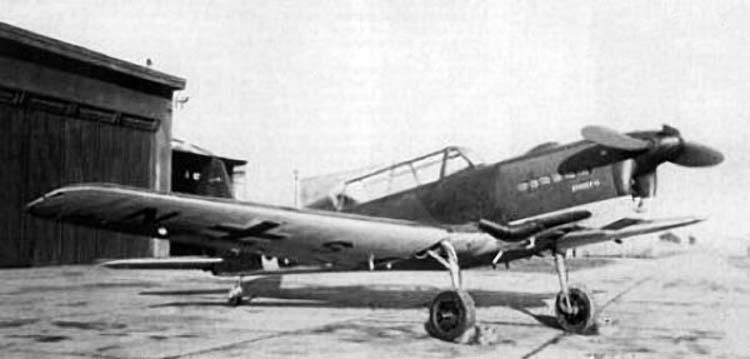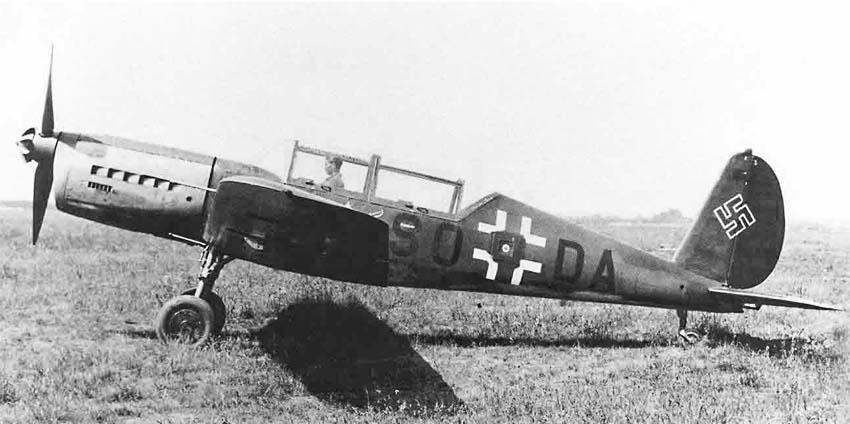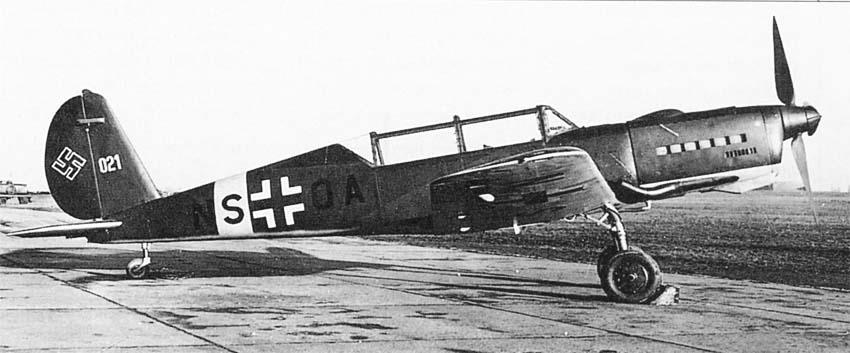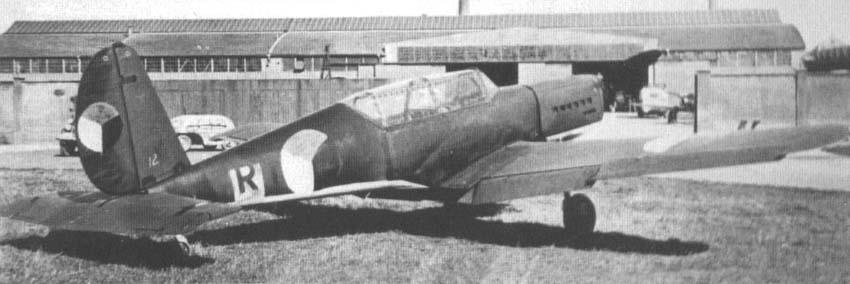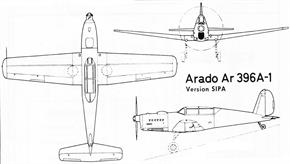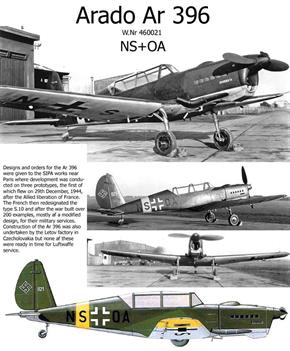| Type | Two seat advanced trainer |
| Engine | 1 Argus As 411TA-1 |
| Dimensions | Length 9,29 m , height 2,45 m , span 11,0 m , wing area , |
| Weights | Empty 1643 kg, loaded , max. take off weight 2060 kg |
| Performance | Max.. speed 354 km/h , cruising speed 305 km/h, range 600 km, endurance , service ceiling 7000 m , climb |
| Armament | 1 7,92 mm MG 17 |
| Type | Werk.Nr | Registration | History |
| V1 | |||
Arado Ar.396 is a multi-purpose single-engine training aircraft. This aircraft became a logical continuation of one of the most successful German Ar.96 training monoplanes, produced in a colossal series for an aircraft of this class: more than 11 thousand copies. Initially, it was planned to be produced under the Ar.296 index, but later, for reasons that are not entirely clear, the index was changed to Ar.396. Also not entirely clear is the goal pursued by the designers of Arado Flugzeugwerke, trying to redesign an already successful aircraft. Perhaps one of the main reasons was the growing shortage of light alloys from which the Ar.96 airframe was made.
The main idea of the Arado designers was the replacement of the Ar.96 all-metal airframe with the Ar.396 all-wood airframe and, of course, as a result of the increase in mass, the installation of a more powerful Argus As.411 engine with a capacity of 600 hp. With. Despite the fact that, due to the change in design, the Ar.396 began to look "rougher" and "angrier" than the Ar.96, the aircraft's flight characteristics even surpassed its predecessor. After very successful testing of the first Ar.396V-1 prototype in 1943, the aircraft was put into series production. In the same year, the first series Ar.396A was put into service (Produced in two versions - Arado Ar 396A-1: training aircraft for advanced flight training, also used for training aerial gunners and Arado Ar 396A-2: aircraft for flight training in appliances). The single-seat version of the Ar 396A-1 aircraft was equipped with one MG 17 machine gun, was equipped with hardpoints for two 50-kg bombs and was intended for training fighter pilots. The two-seat version of the Ar 396A-2 was unarmed.
The next Ar.396B series featured a more economical engine of the same power. Increased range and practical ceiling. The aircraft was used very limitedly, for training purposes mainly for training in the accuracy of bombing.
The production of machines was established at the SIPA factories in France, but after the Allies landed in Normandy, at the end of 1944, it had to be transferred to Prague to the factories of Avia and Letov. However, production of the Ar.396 continued at SIPA even after the Germans left. True, a very small number of aircraft were produced before the end of the war. Now their number is not known.
The main production unfolded in the postwar years. The French produced the aircraft in two modifications and under the designation S.11 and S.12, respectively. The latter was an exclusively French innovation: the aircraft was produced in a variant with an all-metal airframe. In Prague, the Germans also produced a very small number of Ar.396s. These aircraft were used by the Czech rebels during the uprising in Prague on May 5, 1945 as combat aircraft, along with the Ar.96B produced at the same factories. They were not even repainted: Czechoslovak identification marks were applied directly to the standard Luftwaffe camouflage. Production of the Ar.396, together with the Ar.96, continued in Prague after the war until 1948. The total number of aircraft produced is still unknown. When Ar.
The main idea of the Arado designers was the replacement of the Ar.96 all-metal airframe with the Ar.396 all-wood airframe and, of course, as a result of the increase in mass, the installation of a more powerful Argus As.411 engine with a capacity of 600 hp. With. Despite the fact that, due to the change in design, the Ar.396 began to look "rougher" and "angrier" than the Ar.96, the aircraft's flight characteristics even surpassed its predecessor. After very successful testing of the first Ar.396V-1 prototype in 1943, the aircraft was put into series production. In the same year, the first series Ar.396A was put into service (Produced in two versions - Arado Ar 396A-1: training aircraft for advanced flight training, also used for training aerial gunners and Arado Ar 396A-2: aircraft for flight training in appliances). The single-seat version of the Ar 396A-1 aircraft was equipped with one MG 17 machine gun, was equipped with hardpoints for two 50-kg bombs and was intended for training fighter pilots. The two-seat version of the Ar 396A-2 was unarmed.
The next Ar.396B series featured a more economical engine of the same power. Increased range and practical ceiling. The aircraft was used very limitedly, for training purposes mainly for training in the accuracy of bombing.
The production of machines was established at the SIPA factories in France, but after the Allies landed in Normandy, at the end of 1944, it had to be transferred to Prague to the factories of Avia and Letov. However, production of the Ar.396 continued at SIPA even after the Germans left. True, a very small number of aircraft were produced before the end of the war. Now their number is not known.
The main production unfolded in the postwar years. The French produced the aircraft in two modifications and under the designation S.11 and S.12, respectively. The latter was an exclusively French innovation: the aircraft was produced in a variant with an all-metal airframe. In Prague, the Germans also produced a very small number of Ar.396s. These aircraft were used by the Czech rebels during the uprising in Prague on May 5, 1945 as combat aircraft, along with the Ar.96B produced at the same factories. They were not even repainted: Czechoslovak identification marks were applied directly to the standard Luftwaffe camouflage. Production of the Ar.396, together with the Ar.96, continued in Prague after the war until 1948. The total number of aircraft produced is still unknown. When Ar.
